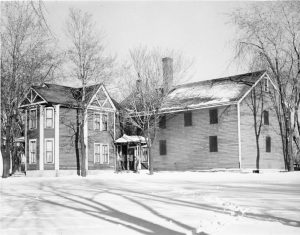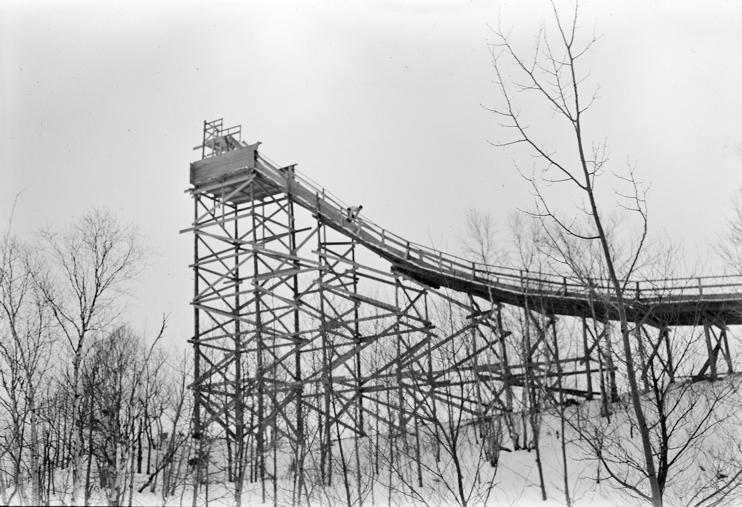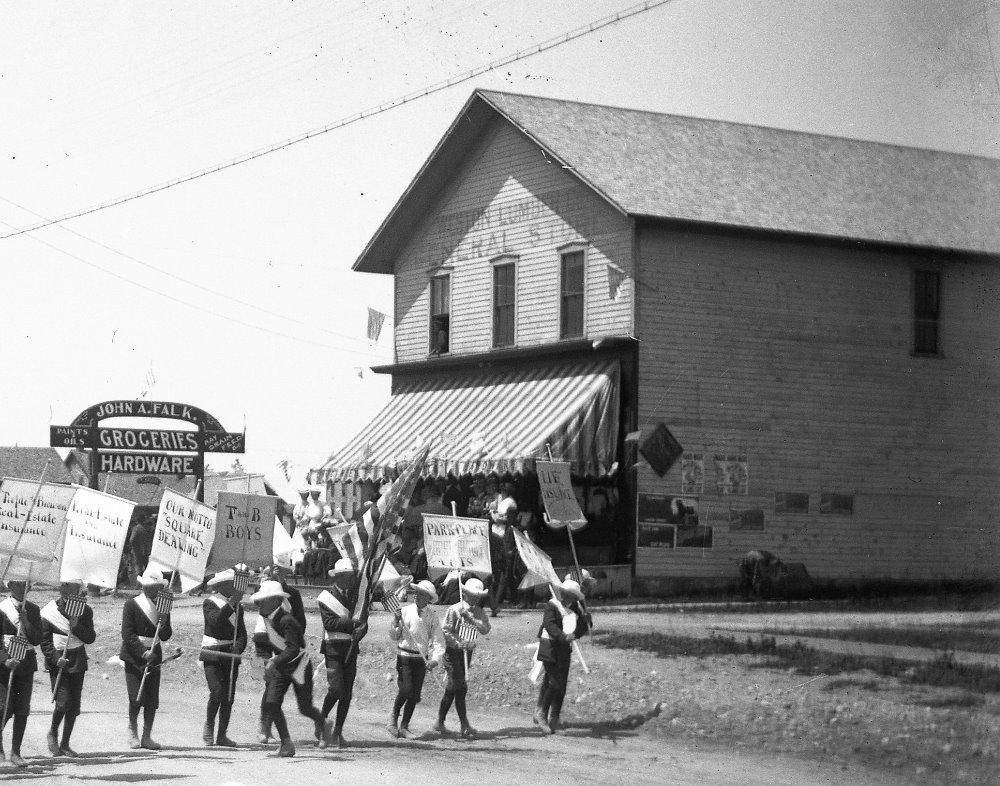
The Schoolcraft County Jail (right) and Sheriff’s residence (left) are pictured here in the 1950’s. SCHS photo, Marcus Bosanic Collection.
During the 1870’s Schoolcraft County was much larger than it is today, extending from Lake Michigan all the way to Lake Superior. Onota (in present day Alger County) was the county seat. But Onota’s days were numbered, as the entire town was destroyed by a great fire in 1879. After that disaster, the county seat of Schoolcraft County was relocated to Manistique.
John Costello was the first person to hold the office of Sheriff in the new county seat of Manistique, serving from 1879 through 1881. He was followed in office by John McCanna with his term as sheriff beginning in 1882.



